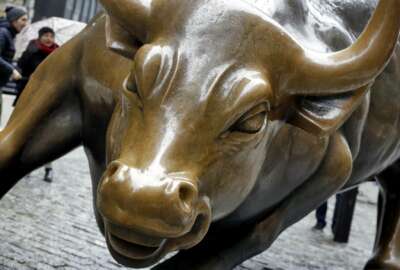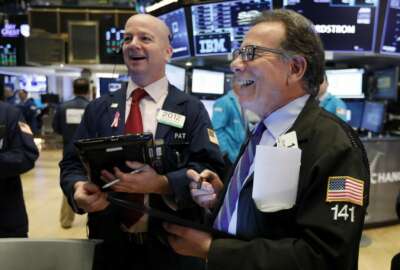
Is your political filter messing with your TSP account?
Maybe it's time to clean or even replace your personal political filter, at least when it comes to making long-range financial decisions. Most experts agree that...
Is your political filter causing you to make unwise choices with your Thrift Savings Plan and other investments?
Did you believe the experts who said Donald J. Trump didn’t have a chance of being elected president of the United States?
Did you go into a financial panic when the above-mentioned person actually got the required number of electoral votes?
Did you know the stock market would plunge on or shortly after Inauguration Day, or did you expect an abrupt and horrible end to the longest running bull market in history — well — by now?
Maybe it’s time to clean or even replace your personal political filter, at least when it comes to making long-range financial decisions. Or you can watch some different news shows, or try to be more relaxed and less partisan in building and keeping the TSP nest egg that could supply anywhere from 30 to 50 cents of every dollar you will have in retirement.
Most experts agree that based on past history the stock market is long overdue for a major correction of 20 to even 30 percent. Gulp! Been there, done that during the Great Recession of 2008-2009.
But the experts just don’t know when, as many said it would happen last year. Some said it happened, or started, in December, while others are predicting toward the end of 2019. Or maybe after the next election in 2020? Looking at the numbers doesn’t tell you where the market may be heading, but it is useful — up to a point — to see where it’s actually been.
And whether you zigged when you should have zagged, or left your investments unchanged.
The Wilshire 5000 Factoid, courtesy of Wilshire.com and not affiliated with “Nearly Useless Factoid,” looks at the US stock market. The C Fund of your TSP looks at the S&P 500 — the largest stocks, while the S Fund takes in the remaining 4,500 stocks, called small cap although some of them are pretty big.
On March 1 the Factoid showed that the 5000 fund had a one day paper gain of about $200 billion.
The Factoid also said the Wilshire 5000 index was up 31.29 percent, or approximately $8.0 trillion since Election Day 2016. And the index says that the market is up 324.33 percent, or $26.7 trillion from the low point of the financial crisis on March 9, 2009.
As of March 1 the market was down 4.47 percent or approximately $1.5 trillion since last year’s high point on Sept. 20. On the other hand, as of March 1 the Wilshire 5000 rose for “the second time in the past three trading days and the fourth time in the past six trading days.” Both are fact, to which some might say, so what? Is the market heading up, steady or ready for a fall. And if so, when?
Long range and short-term snapshots of the stock market are interesting. But unless you’ve got a system nobody knows how to play those predictions forward. For example, the Wilshire 5000 is up 13.02 percent or approximately $3.5 trillion for the quarter. And the market is up 31.29 percent.
Clearly it is tough-to-impossible to predict the market even with the best data and advice. But when politics cloud judgement and combine with the fear and greed many believe drives the market, all bets are off.
Nearly Useless Factoid
by Amelia Brust
Taco Bell has locations in 22 countries and territories but repeatedly failed to set up shop in Mexico, where the company attempted to market its menu as “American food.”
Source: Munchies
Copyright © 2024 Federal News Network. All rights reserved. This website is not intended for users located within the European Economic Area.
Mike Causey is senior correspondent for Federal News Network and writes his daily Federal Report column on federal employees’ pay, benefits and retirement.
Follow @mcauseyWFED





